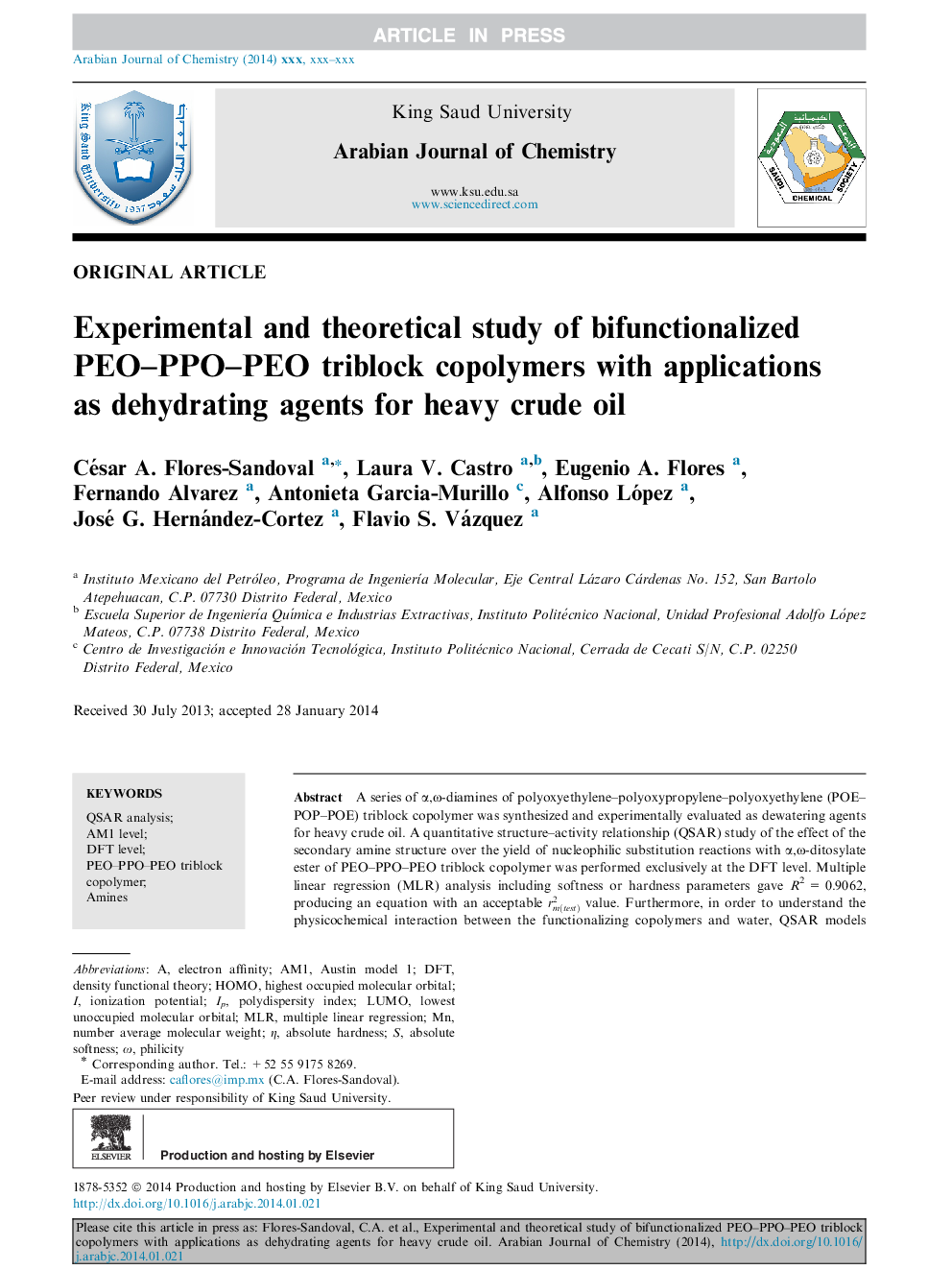| Article ID | Journal | Published Year | Pages | File Type |
|---|---|---|---|---|
| 5142070 | Arabian Journal of Chemistry | 2017 | 10 Pages |
Abstract
A series of α,Ï-diamines of polyoxyethylene-polyoxypropylene-polyoxyethylene (POE-POP-POE) triblock copolymer was synthesized and experimentally evaluated as dewatering agents for heavy crude oil. A quantitative structure-activity relationship (QSAR) study of the effect of the secondary amine structure over the yield of nucleophilic substitution reactions with α,Ï-ditosylate ester of PEO-PPO-PEO triblock copolymer was performed exclusively at the DFT level. Multiple linear regression (MLR) analysis including softness or hardness parameters gave R2 = 0.9062, producing an equation with an acceptable rm(test)2 value. Furthermore, in order to understand the physicochemical interaction between the functionalizing copolymers and water, QSAR models based on AM1 semiempirical and DFT (B3LYP functional) descriptors were carried out for comparative purposes. For the MLR analysis at the AM1 level, R2 = 0.9058, whereas at the DFT level, R2 = 0.9879. 2-(Methylamino)ethanol was employed to evaluate the equations obtained. The residual of the log ERcalcSN2 reaction was â0.0043, showing a good correlation with experimental efficiency. Regarding water removal efficiency, the residuals of log WRcalc at the AM1 and DFT levels were of 0.0220 and 0.0041, respectively. Even though, DFT produced a better correlation, a QSAR study at the AM1 level could be employed to study the behavior of α,Ï-diamines of PEO-PPO-PEO triblock copolymer and to destabilize water/oil emulsions, with a computational cost relatively low compared to DFT calculations.
Keywords
Related Topics
Physical Sciences and Engineering
Chemistry
Chemistry (General)
Authors
César A. Flores-Sandoval, Laura V. Castro, Eugenio A. Flores, Fernando Alvarez, Antonieta Garcia-Murillo, Alfonso López, José G. Hernández-Cortez, Flavio S. Vázquez,
